How To Store Camera Gear
Information technology's much more fun to buy shiny new toys than to recollect about how to properly intendance for them. But if yous're already invested in your arsenal of gear, y'all owe it to yourself to learn how to store your photographic camera and lenses – before your lenses lock up on a shoot or your resale value plummets.
To learn how to protect your gear, you have to sympathize what y'all're protecting it from.
The biggest danger to your camera bodies and lenses come come from two things: edgeless forcefulness (think dropping, slap-up, bully) and humidity.
Solving the first issue is piece of cake plenty: whether at dwelling or on the become, it's worth investing in a protective camera purse and a neck or hand strap. If you're not sure what to pick up, read through our article on the all-time camera bags. For now, let's just assume you're covered on the nuts.
DIY Hacks for Storing Your Lenses
Before we move on: if you're not looking to invest in any new equipment to keep your camera equipment safety, there are notwithstanding some things you can practice to keep your lenses in decent shape. Let's cakewalk through these best practices:
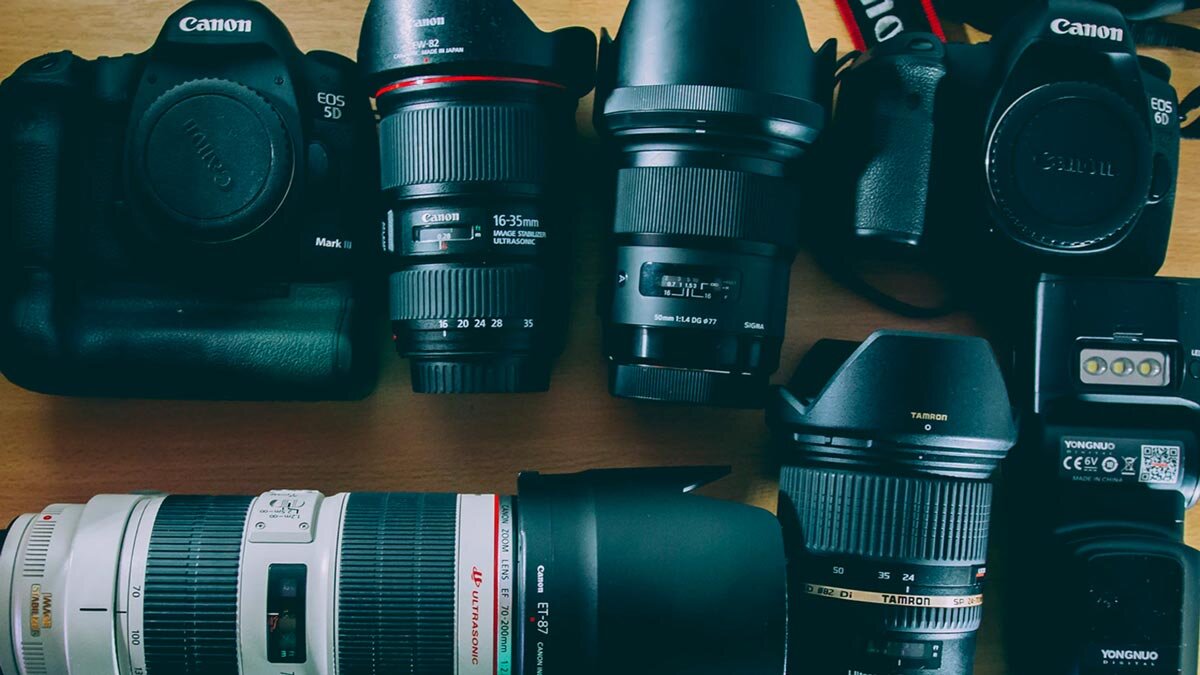
-
Store them front-element-side-down.
This will minimize the presence of oil in your aperture blades (which tin can really gum up the works when yous attempt to alter your aperture in the hereafter). This has go less of a necessity with modern autofocus lenses that utilize less oil in their manufacturing, but it'southward ameliorate to be safe than sorry.
-
Shut aperture rings to the smallest f-end to reduce tension on the springs.
The springs in your lenses, like any other springs, fatigue over time. To keep your lenses like-new, set them to their smallest discontinuity (in other words, the highest number on your lens) when you store them. If your lens doesn't support manual aperture adjustments, just close upward the aperture using your camera torso before you lot turn it off.
Why Humidity is the Camera and Lens Killer
If you're only hither to skim this commodity, hither's what you lot need to know: don't store your photographic camera or lenses in a place that can shop moisture. Ideally, your storage space is air-tight and dry.
Fifty-fifty in the United States, where nosotros tend to think less about humidity and wet levels than somewhere in the tropics, humidity levels are significant enough to exercise existent impairment to your sensitive and calibrated camera equipment.
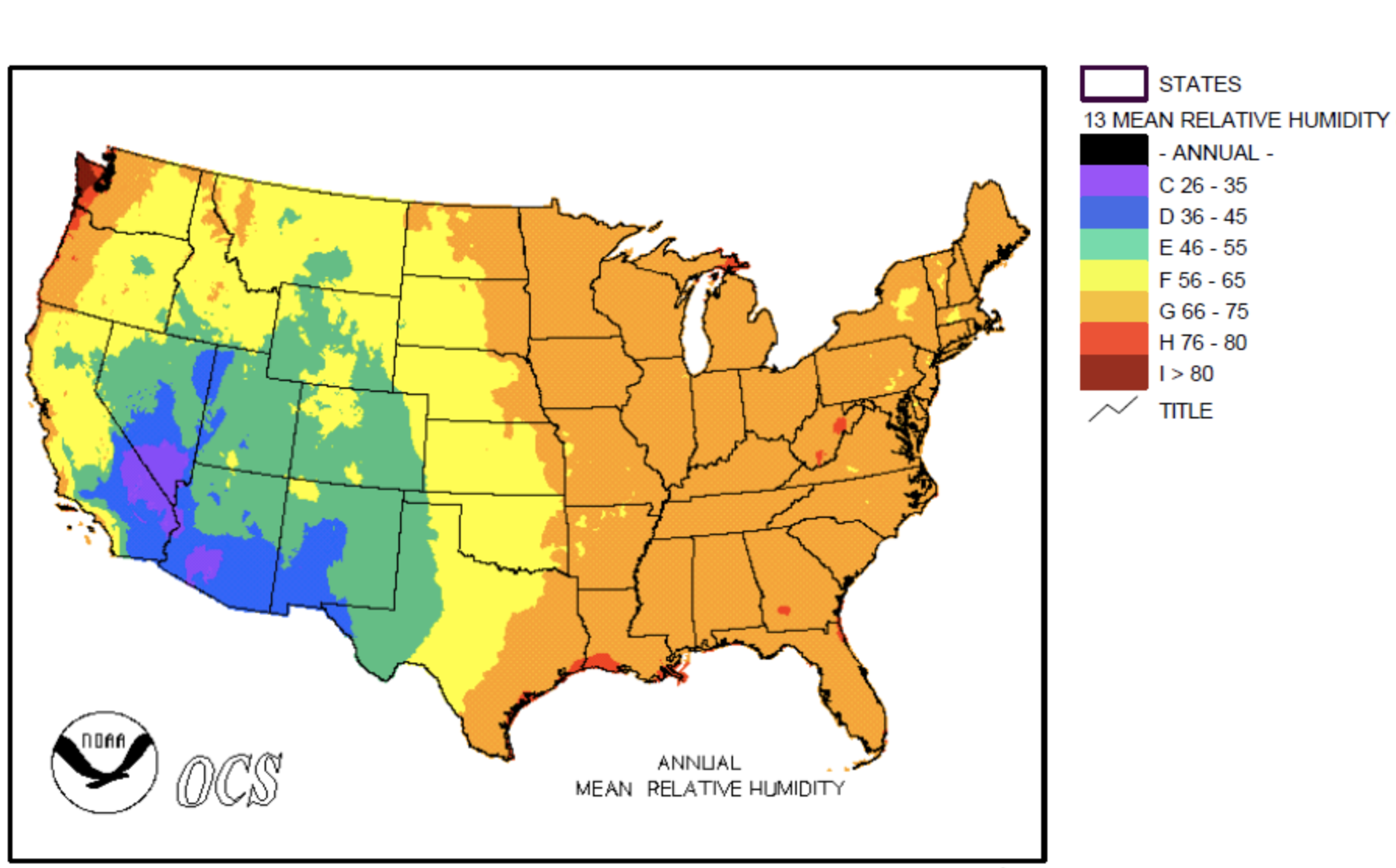
It'due south worth reading The Wandering Lens's writeup on the effects of extreme temperature and humidity.
Humidity can cling your camera sensor (RIP), fog up your lenses, curt electronic circuitry… in worst instance scenarios, it'due south no laughing matter. Fifty-fifty in moderate climates, the dew point can climb unexpectedly, creating a breeding ground for mold and fungus.
Information technology's certainly possible to go years of poor storage practices without seeing any sick effects from fluctuating temperatures and humidity, but eventually, mold and fungus will show up.
So how tin you combat humidity, particularly in long-term storage?
Depending on your budget and the amount of gear you have, your solution tin look similar plastic bins and silica tablets. That'south the bare minimum y'all should have already, but if you lot're more than $500 in to your gear, it's time to take storage more seriously.
You should as well beware of cases and sleeves that worsen humidity. For case, leather lens cases that come in the box from well-nigh manufacturers may look beautiful, but they're functionally useless. Non only do they offering minimal bear upon protection, but the textile draws in a meaning amount of moisture. Later a few months of storage, you might find the unwelcome surprise of a foggy front element. Simply similar that, yous've got mold.
But if you're serious about protecting your gear, read on.
The Professional Solution for Camera Equipment Storage: Dry Cabinets
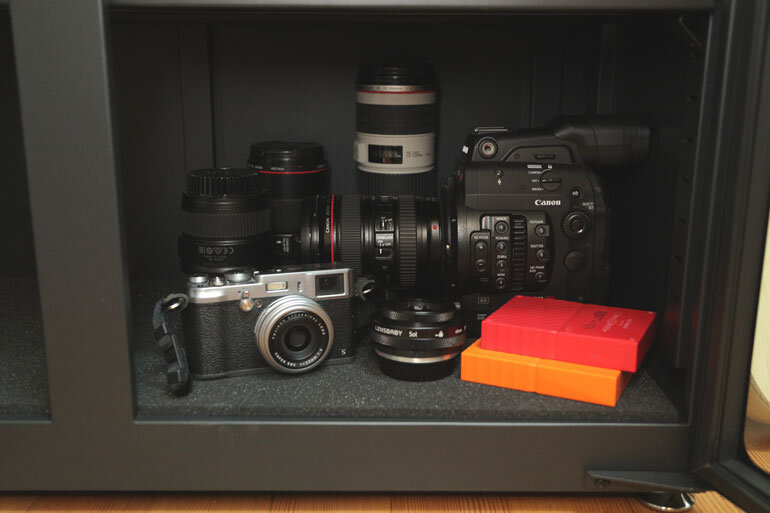
Hobbyists and amateurs should be fine with the above tips. If you oasis't already invested in your gear and you lot aren't planning on reselling, you lot probably don't need to worry about the optimum fashion to store your camera equipment.
For the balance of us – myself included, who has well over $10,000 dollars in camera gear sitting unused in my house – information technology's of import to think of our gear as financial assets. It's not only imperative to ensure the equipment stays working and in top class for our own shoots, it'south just as important to preserve the resale value of your gear so that you lot can upgrade frequently and stay on the top of your game.
If the above sounds like you, you're going to want what's called a "dry chiffonier dehumidifier" — a temperature controlled, dehumidified, air-tight, electronic cabinet (and in many cases, complete with locking systems).
Dry cabinets come in anywhere between $200 to $700 dollars — in most cases, cheaper than a single lens or torso. In other words, information technology'due south an essential purchase for the serious photographer.
I've tried many dry cabinets, and my recommendation comes downwards to one brand.
Best Dry Cabinet Dehumidifier: FORSPARK
FORSPARK dry cabinet dehumidifiers come in many sizes, from a petite 30L all the way up to 125L. They all come up stocked with similar features: temperature command, humidity command, fundamental-locked — and FORSPARK's propriety rapid dehumidifying engineering science, which edges it out over the many knock-offs.
Their closest competitor, Ruggard, produce quality products equally well — but I've had peachy customer service experiences with FORSPARK, which is important when information technology comes to long-term use cases like a dry out cabinet (though I do adopt the look of Ruggard dry out cabinets!)
There are ii sweetness spots in the lineup in terms of value-for-the-money and practicality
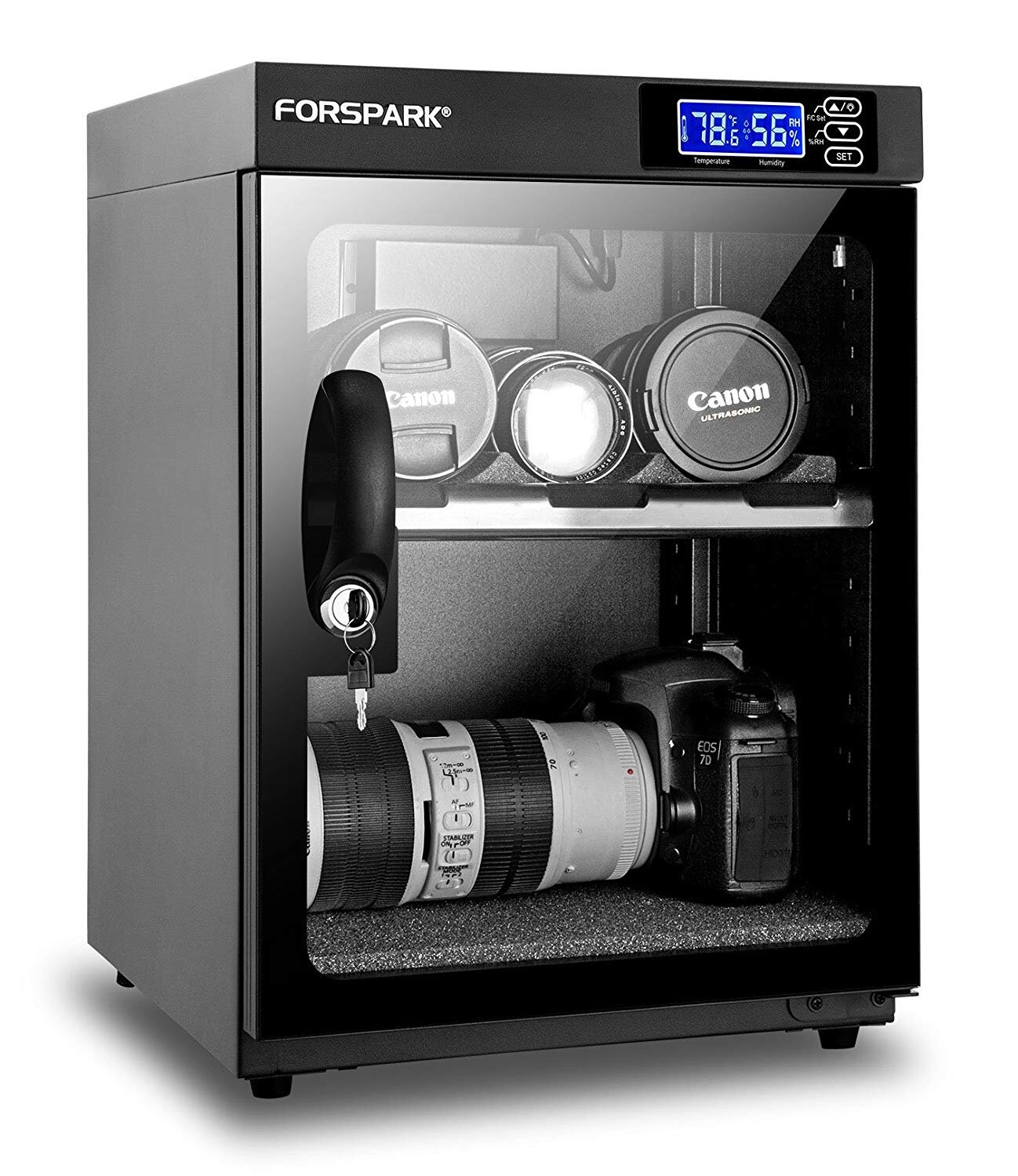
FORSPARK 30L Dry Cabinet Review: The Best Dry Chiffonier Under $200
The 30L is the get-to dry out cabinet for the amateur-turning-pro. These things tin rapidly become pricy, so if you're not looking to protect a boatload worth of gear, the 30L is the better value (unless you're looking to future proof). It's also dandy for smaller spaces, like studio apartments or bedrooms.
You tin fit two bodies and viii lenses in the 30L. It'll be a tight squeeze – and probably non every bit flashy as a larger example – only it'll practise the chore.
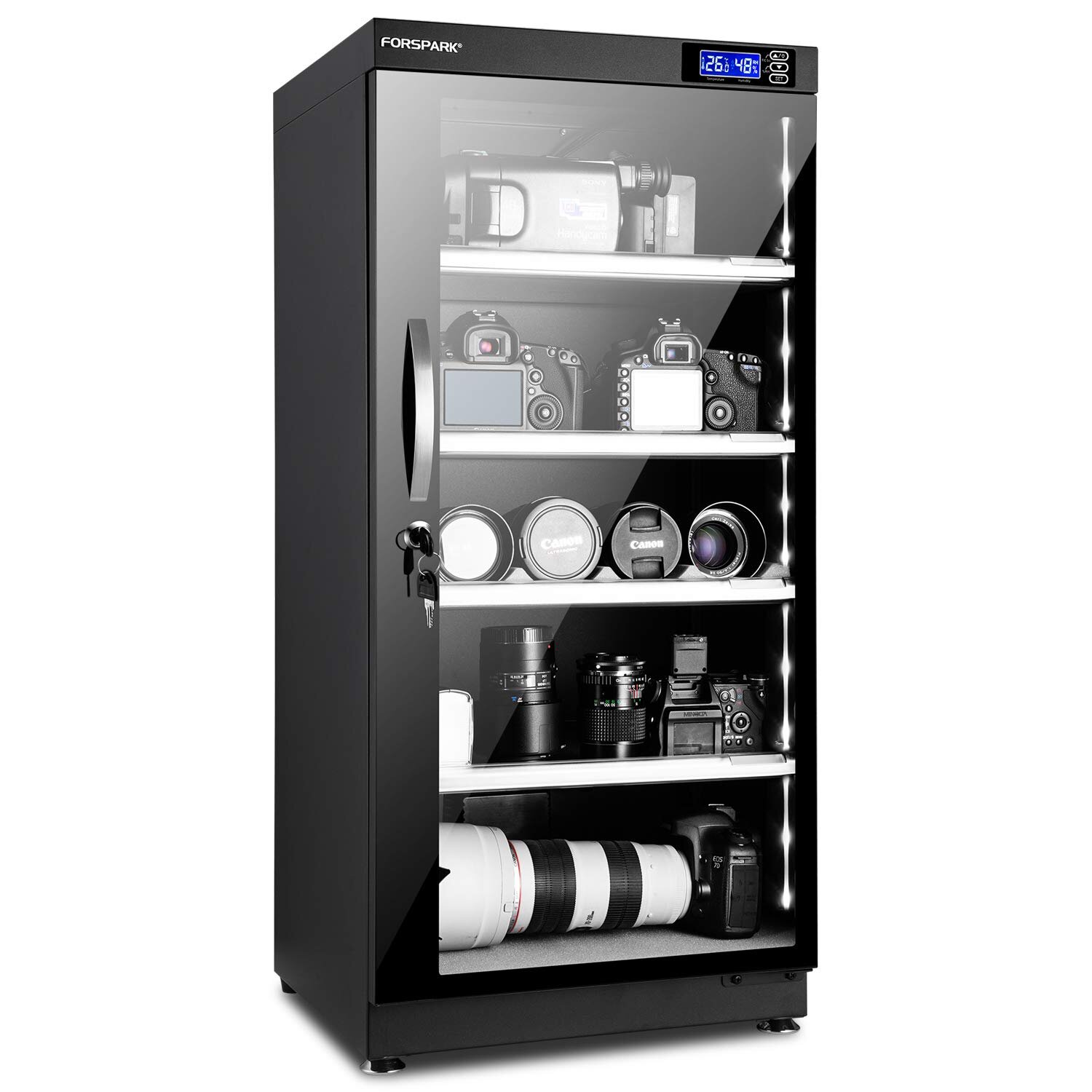
FORSPARK 125L Dry Chiffonier Review: The Best Dry out Cabinet for Large Collections
With massive storage and adaptable shelving, the real beauty of the FORSPARK 125L dry cabinet is that you tin pre-pack your camera purse with all the gear you employ on shoots, toss it in the chiffonier, and never worry about mold or fungus. For photographers who utilize their gear often, this size offers almost efficient storage by a mile.
Plus — who doesn't like the eye candy of seeing their bodies and lenses lined up in a drinking glass case?
Note: these are the merely two cabinets I've personally tried and feel comfortable recommending to our readers. The other sizes in the lineup should perform only too, but I don't know that outset-hand. Choose wisely!
Are Dry Cabinets Really Worth Information technology?
At that place's nothing very exciting about dry cabinets, and dropping a few hundred dollars on something as preventative and practical as storage probably doesn't thrill y'all.
But hither's the reality: dry out cabinets are absolutely worth it, and I'll prove it using numbers and an unfortunate anecdote.
While camera bodies depreciate relatively apace (anywhere from $200 to 800 a twelvemonth), camera lenses concur value remarkably well. For instance, Fuji lenses have almost no depreciation factor. Yous can purchase a Fuji lens, keep it in good status, and resell it in two years with almost no loss whatsoever.
Yet, a foggy front element, slugging autofocus, gluey aperture ring, or beaten-up housing tin driblet your value by half - or more. If your lens is in bad enough shape, it'southward often not fifty-fifty worth it to resell.
Early on in my photography career, I invested in the Canon 5D Mark Ii and the Canon L Serial of lenses. I traveled the globe with them, moved cross-country, shot stone shows and in the desert, through tropical forests, and very often in the rain. The photos I got were well worth it. When I focused on other aspects of my career, they sabbatum in storage for four years.
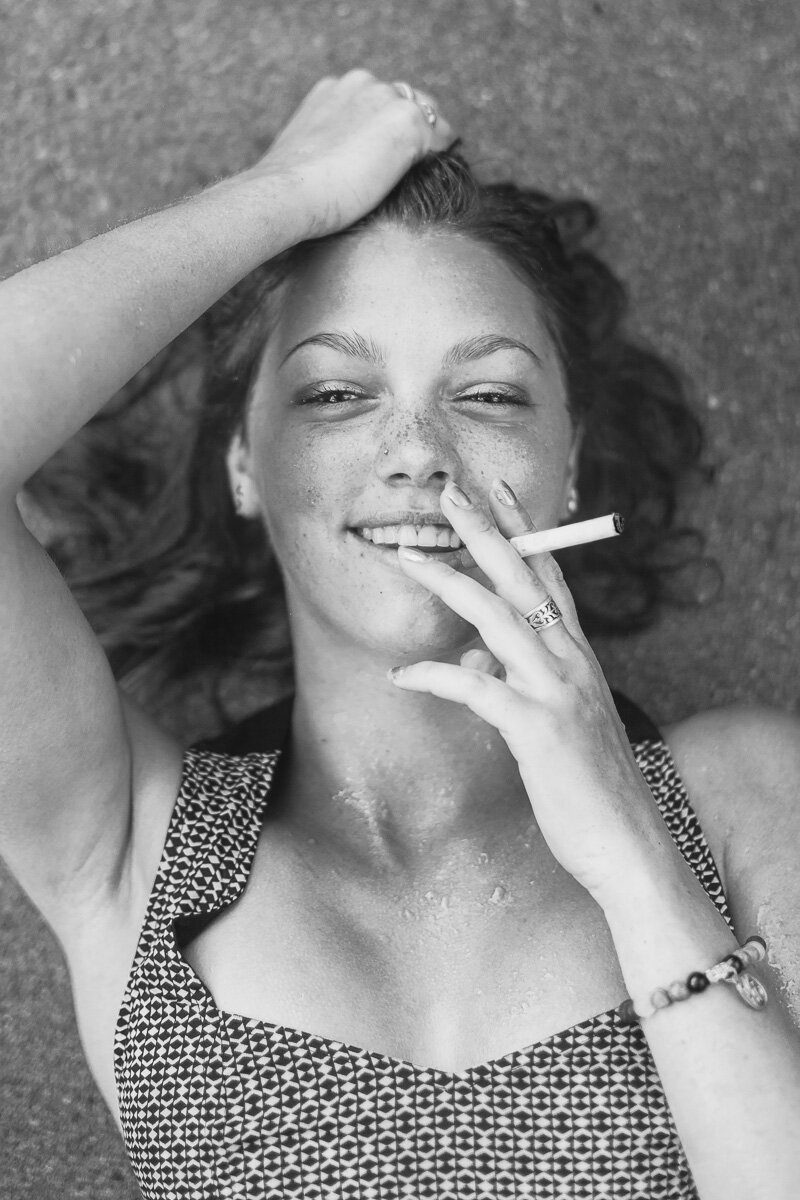
But I was young, stupid, and didn't think to intendance for my gear similar I should have. When I wanted to move on to the Fuji ecosystem (and male child, am I glad I did), I was only able to resell my moldy Canon lenses for 1/5th of the marketplace rate. In other words, I lost over $3000. If I had invested in proper storage, I would accept saved at least $2500.
Don't brand my mistake.
And if yous can't beget a dry out chiffonier, at the very least, store your gear responsibly in air-tight plastic bins and bank check on them regularly. Yous'll be glad you did.
Paul Mauer
Digital strategist, author, and image maker based in Manhattan working with clients in the tech and amusement manufacture.
Source: https://www.sharkandpalm.com/photography-tips/how-to-store-camera-and-lenses-at-home-and-keep-your-resale-value-high
Posted by: renzibaxt1936.blogspot.com

0 Response to "How To Store Camera Gear"
Post a Comment